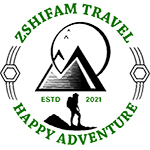The Ngorongoro Conservation Area (NCA) is a UNESCO World Heritage Site and one of Tanzania’s most iconic wildlife destinations. It is located in northern Tanzania and is famous for its rich biodiversity, stunning landscapes, and cultural significance. The centerpiece of the NCA is the Ngorongoro Crater, the largest unbroken and unfilled volcanic caldera in the world.
Key Features of Ngorongoro Conservation Area
1. Geography and Landscape
Covers about 8,292 square kilometers (3,202 square miles).
The area includes a range of habitats: highland forests, grasslands, savannas, and swamps.
Ngorongoro Crater:
Formed by the collapse of a volcano around 2-3 million years ago.
Diameter: Approximately 19 km (12 miles).
Floor Area: 260 square kilometers (100 square miles).
The crater walls are about 600 meters (2,000 feet) high.
2. Wildlife
Often referred to as an “African Eden,” the NCA hosts over 30,000 large animals.
Home to the Big Five: lion, leopard, elephant, rhinoceros, and buffalo.
The crater supports a dense population of lions, as well as hyenas, cheetahs, jackals, and servals.
Lake Magadi, a soda lake on the crater floor, attracts flamingos and other waterbirds.
It’s one of the best places to spot the endangered black rhinoceros in East Africa.
Large herds of zebras, wildebeest, and gazelles migrate in and out of the area as part of the Great Migration.
3. Cultural Significance
The NCA is home to the Maasai people, who coexist with the wildlife. Their traditional lifestyle, involving cattle herding, is preserved in harmony with conservation efforts.
Important archaeological sites include:
Olduvai Gorge: Known as the “Cradle of Mankind,” this site has yielded fossil evidence of early human ancestors.
Laetoli Footprints: Preserved footprints of early hominins dating back 3.6 million years.
4. Conservation
Established in 1959 as a multiple-use area where wildlife conservation, tourism, and human habitation coexist.
Declared a UNESCO World Heritage Site in 1979.
Strict anti-poaching laws and sustainable tourism initiatives are in place to protect the fragile ecosystem.
Tourism in Ngorongoro Conservation Area
Activities
Game Drives:
Explore the crater floor for exceptional wildlife viewing.
Ideal for spotting lions, elephants, and black rhinos.
Birdwatching:
Over 500 bird species, including flamingos, ostriches, and crowned cranes.
Visit Olduvai Gorge:
Learn about human evolution through the museum and guided tours.
Walking Safaris:
Guided hikes along the crater rim or to nearby areas like Empakai Crater.
Cultural Tours:
Interact with the Maasai community and learn about their traditions.
Best Time to Visit
Dry Season (June to October): Ideal for wildlife viewing due to reduced vegetation and better visibility.
Green Season (November to May): Lush landscapes and fewer tourists, with excellent birdwatching opportunities during the wet months.
Access
The NCA is about 180 km (112 miles) from Arusha.
Travel time: 4–5 hours by road or 45 minutes by air to Lake Manyara Airstrip.
Challenges
Human-Wildlife Conflict:
Increasing human populations and livestock can strain resources shared with wildlife.
Tourism Impact:
Managing tourist numbers to prevent degradation of the environment.
Climate Change:
Affecting water sources and wildlife migration patterns.
Why Visit Ngorongoro Conservation Area?
Ngorongoro offers a unique blend of natural beauty, wildlife abundance, and cultural heritage. Whether you’re a nature enthusiast, archaeologist, or simply a traveler seeking breathtaking landscapes, it is a must-visit destination.
TRAVEL TIME TO NGORONGORO CONSERVATION AREA
Arusha to Ngorongoro Conservation Area: 3 hours
Ngorongoro Conservation Area to Serengeti National Park: 2 hours’ drive.
Ngorongoro Conservation Area to Lake Manyara: 1 hour drive.
Ngorongoro to Tarangire: 2 hours’ drive










